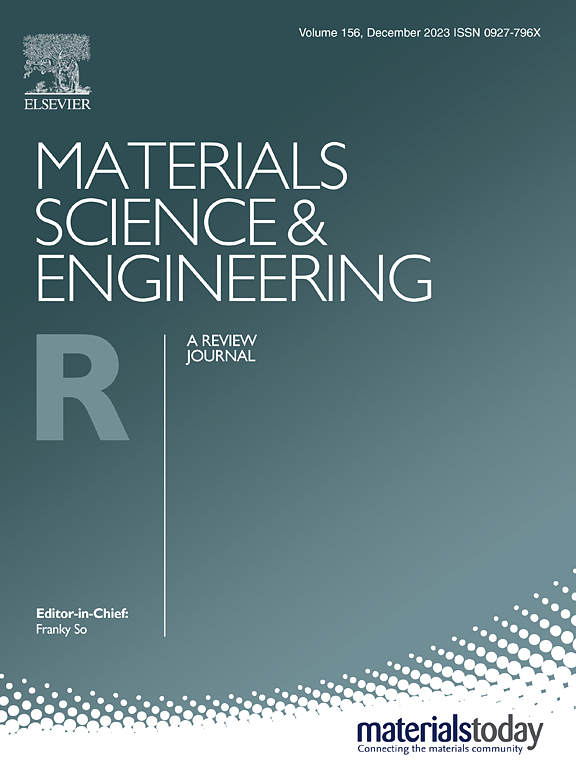开发锂离子电池高能量密度硅阳极时忽略的界面化学挑战
IF 31.6
1区 材料科学
Q1 MATERIALS SCIENCE, MULTIDISCIPLINARY
引用次数: 0
摘要
通过组装硅||锂半电池评估硅(Si)负极性能是开发高能量密度锂离子电池(LIB)的主要方法。然而,大多数研究只关注硅负极的变化,而忽视了锂(Li)金属对电极上电解液的稳定性。在此,我们发现所获得的电池性能不仅取决于硅阳极表面的锂+(脱)溶行为,而且还受到锂电极上副反应引起的锂化过电位的显著影响。确定这一点意义重大,因为电解质分解对锂电极的这些影响以前一直被视为硅阳极副反应的一个组成部分。我们提出了电解质溶解结构和电极界面模型的新视角,以分别揭示硅电极和锂电极上的界面行为。所发现的 Li+ 溶解和(去)溶解行为的差异不仅为不同电解质中不同的电解质稳定性提供了原因,还解释了基于四氢呋喃 (THF) 的电解质中的优异性能。这项研究强调了了解单个电极界面上的电解质行为对判别电极性能可靠性的重要性,同时也为高能量密度 LIB 的优异电解质设计引入了新的原理。本文章由计算机程序翻译,如有差异,请以英文原文为准。
Overlooked challenges of interfacial chemistry upon developing high energy density silicon anodes for lithium-ion batteries
Evaluation of silicon (Si) anode performance by the assembled Si||Li half-cells is the primary approach in the development of high-energy-density lithium-ion batteries (LIBs). However, most studies focus solely on the variations of Si anode, the stability of electrolyte on the lithium (Li)-metal counter electrode has been overlooked. Herein, we discovered that the acquired cell performance not only depends on the Li+ (de-)solvation behaviors on the Si anode surface but also was affected significantly by the lithiation overpotential caused by the side reactions on the Li electrode. It is significant to identify this point, as these influences of electrolyte decomposition on the Li electrode have been previously regarded as an integral part of side reactions on the Si anode. We proposed a new perspective of the electrolyte solvation structure and electrode interfacial model to unravel the interfacial behaviors on the Si and Li electrodes respectively. The identified differences in the Li+ solvation and (de-)solvation behaviors not only provide reasons for the varied electrolyte stability in different electrolytes but also interpret the superior performance in tetrahydrofuran (THF)-based electrolytes. This study underscores the importance of understanding electrolyte behavior at the interfaces of individual electrodes to discern the reliability of electrode performance and also introduce a novel principle for designing superior electrolytes for high-energy-density LIBs.
求助全文
通过发布文献求助,成功后即可免费获取论文全文。
去求助
来源期刊

Materials Science and Engineering: R: Reports
工程技术-材料科学:综合
CiteScore
60.50
自引率
0.30%
发文量
19
审稿时长
34 days
期刊介绍:
Materials Science & Engineering R: Reports is a journal that covers a wide range of topics in the field of materials science and engineering. It publishes both experimental and theoretical research papers, providing background information and critical assessments on various topics. The journal aims to publish high-quality and novel research papers and reviews.
The subject areas covered by the journal include Materials Science (General), Electronic Materials, Optical Materials, and Magnetic Materials. In addition to regular issues, the journal also publishes special issues on key themes in the field of materials science, including Energy Materials, Materials for Health, Materials Discovery, Innovation for High Value Manufacturing, and Sustainable Materials development.
 求助内容:
求助内容: 应助结果提醒方式:
应助结果提醒方式:


